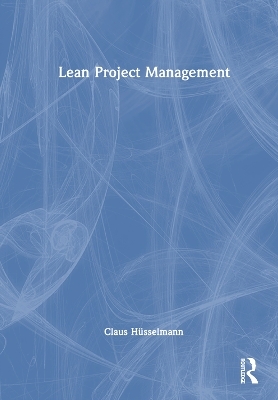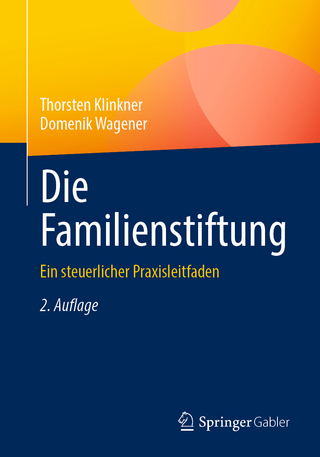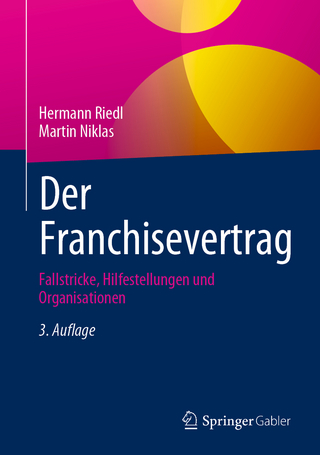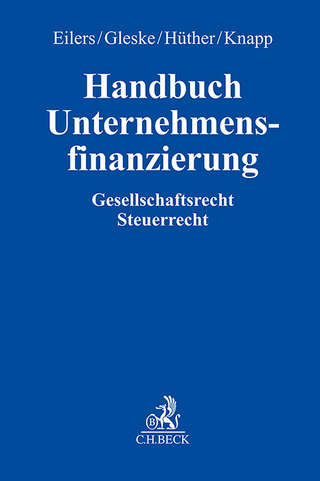
Lean Project Management
Routledge (Verlag)
978-1-032-55654-3 (ISBN)
Many organisations face the challenge of making their project management more agile. However, the circumstances are often not suitable for this: The desired agility either does not fit the existing projects, or there is a lack of sufficient systematics. Lean Project Management shows how the advantages of different Lean Project Management methods – adaptive, targeted and flexible – can be combined. In addition to the established methods of classic and agile project management, proven methods and tools from Lean Management are used and further developed with a view to the requirements of project management (such as Gemba, 5S and more). The book shows how an organisation can systematically professionalise its project management, and make it more flexible in a targeted manner, in order to achieve more value with less effort. Aimed at students on postgraduate courses in business and project management as well as professional project managers working in organisations both large and small, Lean Project Management is a clear and comprehensive guide to combining the best methods to achieve optimal results.
Claus Hüsselmann is head of the Laboratory for Process and Project Management in the Department of Industrial Engineering at the TH Mittelhessen University of Applied Sciences, Germany.
Table of Contents
Introduction
Challenges in modern project management
Motivation of Lean Project Management
1 Basics for Lean Project Management
1.1 Project management
1.1.1 Value creation through projects
1.1.2 Unified Project Management Framework - the framework for PM
1.2 Basics of Lean Management
1.2.1 Origin from production
1.2.2 Identification of waste
1.2.3 Core principles of Lean Management
2 Agility and Complexity
2.1 The essence of agility
2.1.1 Motivation
2.1.2 Origin of the term
2.1.3 Agility - a definition of the term
2.1.4 Core principles and practices of agility
2.1.5 Hybrid approaches
2.1.6 Examples of hybrid project approaches
2.2 How much PM is in Scrum?
2.2.1 The Scrum Framework
2.2.2 The Delta Analysis
2.2.3 Results of the practices and methods
2.2.4 The process analysis in detail
2.3 Dealing with complexity
2.3.1 What does complexity mean?
2.3.2 Definition of terms
2.3.3 Procedure
2.3.4 Handling
2.3.5 The dilemma of complexity
2.3.6 The quintessence of managing complexity
3 Core principles of Lean Project Management
3.1 Definition of Lean PM
3.2 Waste in projects
3.3 Interpretation of the Lean Management core principles
3.3.1 Customer and value concept
3.3.2 Flow- and Pull-principle
3.3.3 Perfection
3.3.4 Project products
3.3.5 Application of the Lean principles
3.4 Action maxims for Lean PM
3.4.1 Selected well-known guiding principles for action
3.4.2 The 3G for Lean Project Management
4 Practices of Lean Project Management
4.1 What are practices?
4.2 Integrative contract design
4.2.1 Characteristics
4.2.2 The relational contract
4.2.3 The agile fixed price contract
4.3 Breathing Scope
4.3.1 Definition of the breathing scope
4.3.2 The MuSCoW system
4.3.3 Target Value Design
4.3.4 Weighted Shortest Job First
4.4 Goal-oriented, flexible project planning
4.4.1 Last Responsible Moment
4.4.2 Set-based design
4.4.3 Rolling wave planning
4.4.4 Last Planner
4.5 Process-oriented control
4.5.1 Value stream method
4.5.2 Project Kanban
4.6 Continuous improvement
4.6.1 Kaizen/Continuous improvement process
4.6.2 Retrospectives/Lessons Learned
4.7 Further practices
4.7.1 Voice of the Customer and User Story
4.7.2 Expense calculation
4.7.3 Defect avoidance
4.7.4 Cause identification
4.7.5 Facilitating work
4.8 Agile or Classic? - the Agilometer
4.9 The PM Value Stream Analysis
4.9.1 The identification of value streams
4.9.2 Lean Project Risk Management
4.9.3 Lean Project Knowledge Management
5 Use Cases of Lean Project Management
5.1 Case study 1 - Personnel management system
5.1.1 The project at a glance
5.1.2 Personnel and organisation
5.1.3 Procedures and project flow
5.1.4 Scope and task management
5.1.5 Other elements
5.2 Case study 2 - ZLP (Central Police Control Centre)
5.2.1 The project at a glance
5.2.2 Scope Management
5.2.3 Project organisation
5.2.4 Project planning and control
5.2.5 Order orientation
5.2.6 Other selected PM disciplines
6 Analysing the Conditions of a Project
6.1 Classification of projects
6.2 Project characterisation criteria
6.2.1 General alignment of the PM system
6.2.2 Case study: Creating an audio tour
6.3 Overall view of the PM system adaptation
7 Implementation of Lean Project Management
7.1 Organisational classification
7.1.1 Cultural framework
7.1.2 Systemic view
7.1.3 Employee-related leadership
7.1.4 Project-related application of Lean PM
7.2 Procedure for the introduction
7.2.1 Introduction of Lean PM as a change project
7.2.2 Technical procedure
7.2.3 Practices in project implementation
7.2.4 Success factors in the implementation of Lean PM
8 Perspective of Lean Project Portfolio Management
8.1 Background of project portfolio management
8.2 Criticism of the classic PPM
8.3 Success factors in Project Portfolio Management
8.4 Approaches to increase the agility of Project Portfolio Management
8.5 Application of the Lean core principles
8.5.1 Basics
8.5.2 Customer and value in PPM
8.5.3 Value streams in PPM
8.5.4 Waste in PPM
8.5.5 Flow principle in PPM
8.5.6 Pull principle in PPM
8.5.7 Perfection in the PPM
8.6 Preliminary concluding remarks on Lean-Agile PPM
| Erscheinungsdatum | 02.11.2023 |
|---|---|
| Zusatzinfo | 35 Tables, black and white; 118 Line drawings, black and white; 3 Halftones, black and white; 121 Illustrations, black and white |
| Verlagsort | London |
| Sprache | englisch |
| Maße | 174 x 246 mm |
| Gewicht | 453 g |
| Themenwelt | Wirtschaft ► Betriebswirtschaft / Management |
| Wirtschaft ► Volkswirtschaftslehre | |
| ISBN-10 | 1-032-55654-4 / 1032556544 |
| ISBN-13 | 978-1-032-55654-3 / 9781032556543 |
| Zustand | Neuware |
| Haben Sie eine Frage zum Produkt? |
aus dem Bereich


